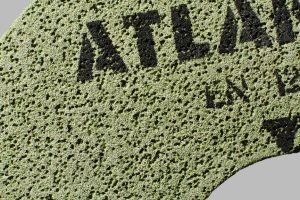The Grinding Belt: Everything You Need to Know
When it comes to removing large amounts of metal and other materials from workpieces, a grinding belt is one of the most powerful tools around. While hand-operated angle grinders have the flexibility for freely cutting and polishing, they are often not powerful enough for heavy-duty sanding and grinding. For metal processing and other industrial jobs, stationary belt grinders are necessary to achieve precision-made convex and concave-shaped workpieces. Here is our guide to the various types of grinding belts available and how they can be used.

What are Belt Grinders?
Belt grinders are large strips that feature an abrasive grain for applying to a material backing such as cloth, film, foam or paper. Unlike angle grinders which can move around freely, belt grinders remain stationary and mounted on wheels or pulleys. These wheels and pulleys rotate the belt rapidly so that when applied to a workpiece it can sand, grind and finish the piece. Belt grinders come in a range of sizes from narrow to large, depending on their application. Other factors that determine how you are using include the grit size, grain and backing material.
Features of Belt Grinders
The following features help determine the application for using a belt grinder:
- Backing – The material used for the backing of the belt can determine how resilient the belt is during use. For example, woven materials such as cloth are great for belts in tougher jobs such as abrasive planning. Plastic film, foam and sponge also offer belt grinders resilience when used in grinding.
- Grain – Whether you are using your belt for grinding, deburring, polishing or finishing, there are different grain types for each application. Aluminium oxide is the most common type of grain for grinding. While super abrasive grains such as diamond and cubic boron nitride are useful for polishing as well as grinding stronger materials such as carbon and alloy steel.
- Grit Size – This measures the number of abrasive grains that are found in a matrix or bonded to the surface of the belt. The higher the number, the finer the grit, which is better for creating a flatter, polished surface. In turn, lower grit sizes are better for removing larger amounts of material for a workpiece.
- Additional Features – There are other features that determine the application of belt grinders. Some are lubricated to improve resistance while loading and for improved performance when cutting stainless steel, nickel alloys and titanium. Some belts also feature anti-static features to eliminate the risk of any static charges.
Abrasive Grinding Belts & Rolls
- Our Linisher Belts are suitable for grinding and deburring weld seams, deburring castings, and fettling workpieces. These belts come as file and wide belts with paper and cloth backings and use Aluminium Oxide, Zirconia, Silicon Carbide & Ceramic grains with grit sizes that range from 20 up to 1200 grit
Kayson Green
Here at Kayson Green, we have a wide range of belt grinders and rolls suitable for any application. To find out more about our belt grinders and rolls, please view our online store, or Contact us today.
Browse Products Call +44 (0)1206 751500 Email sales@kaysongreen.co.uk